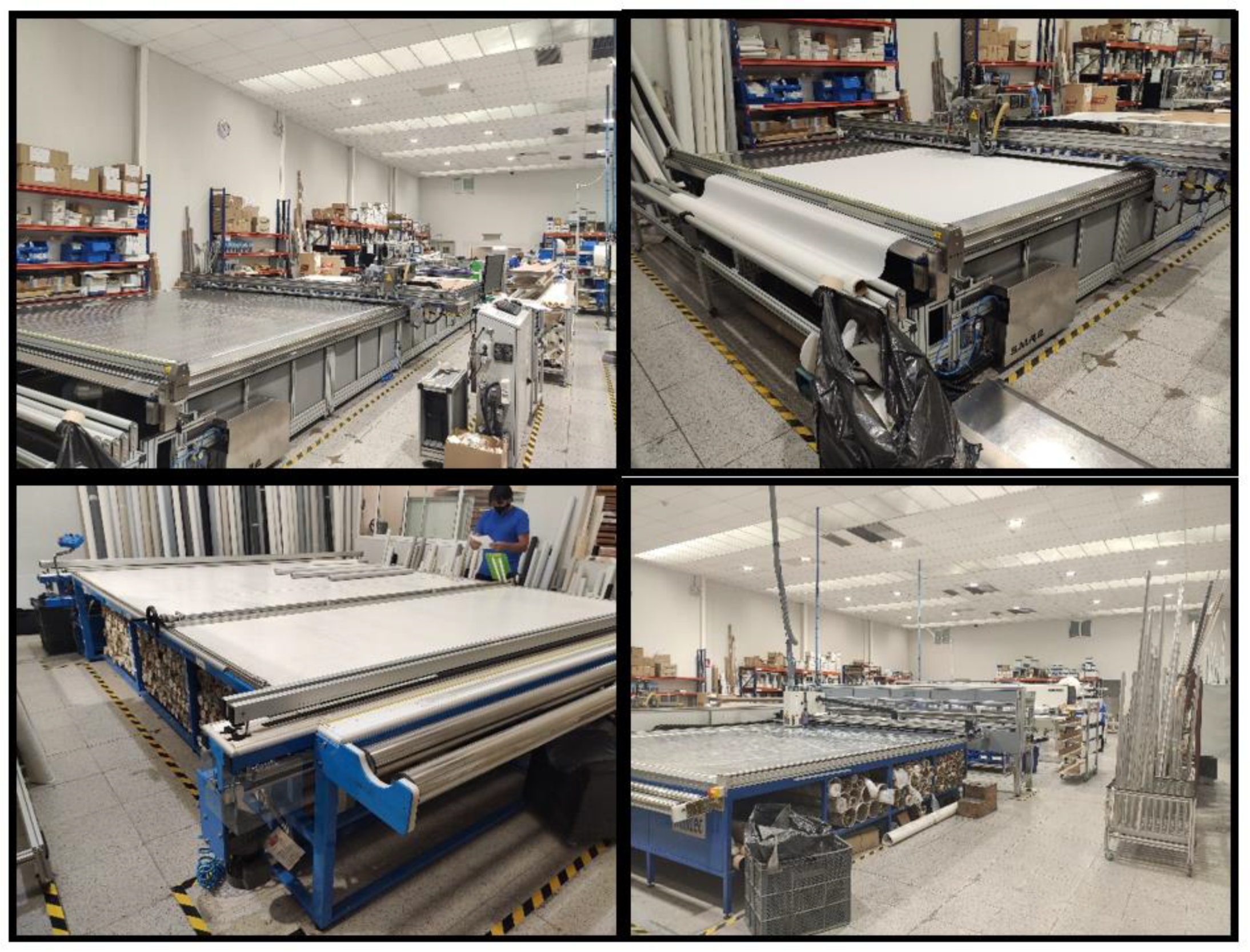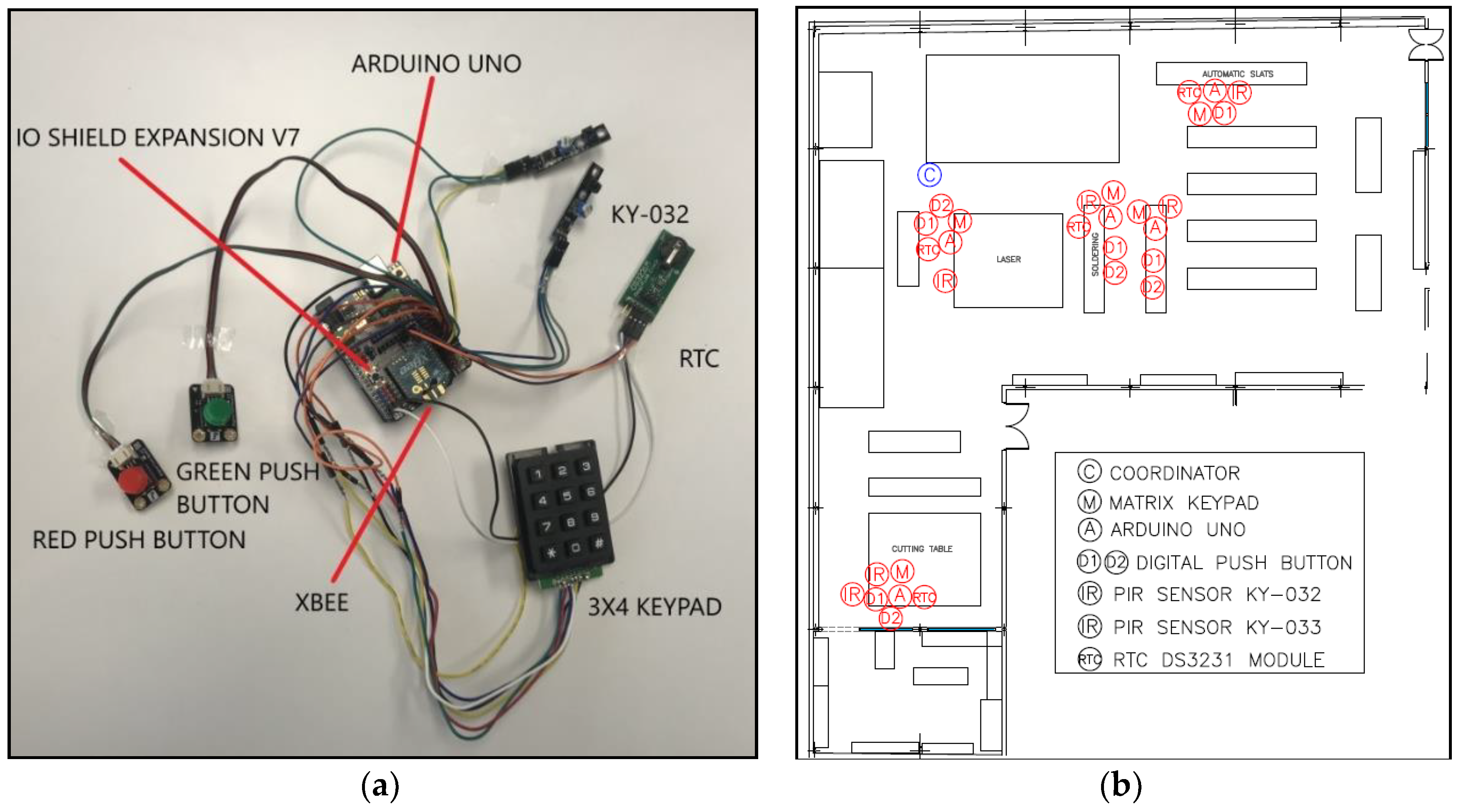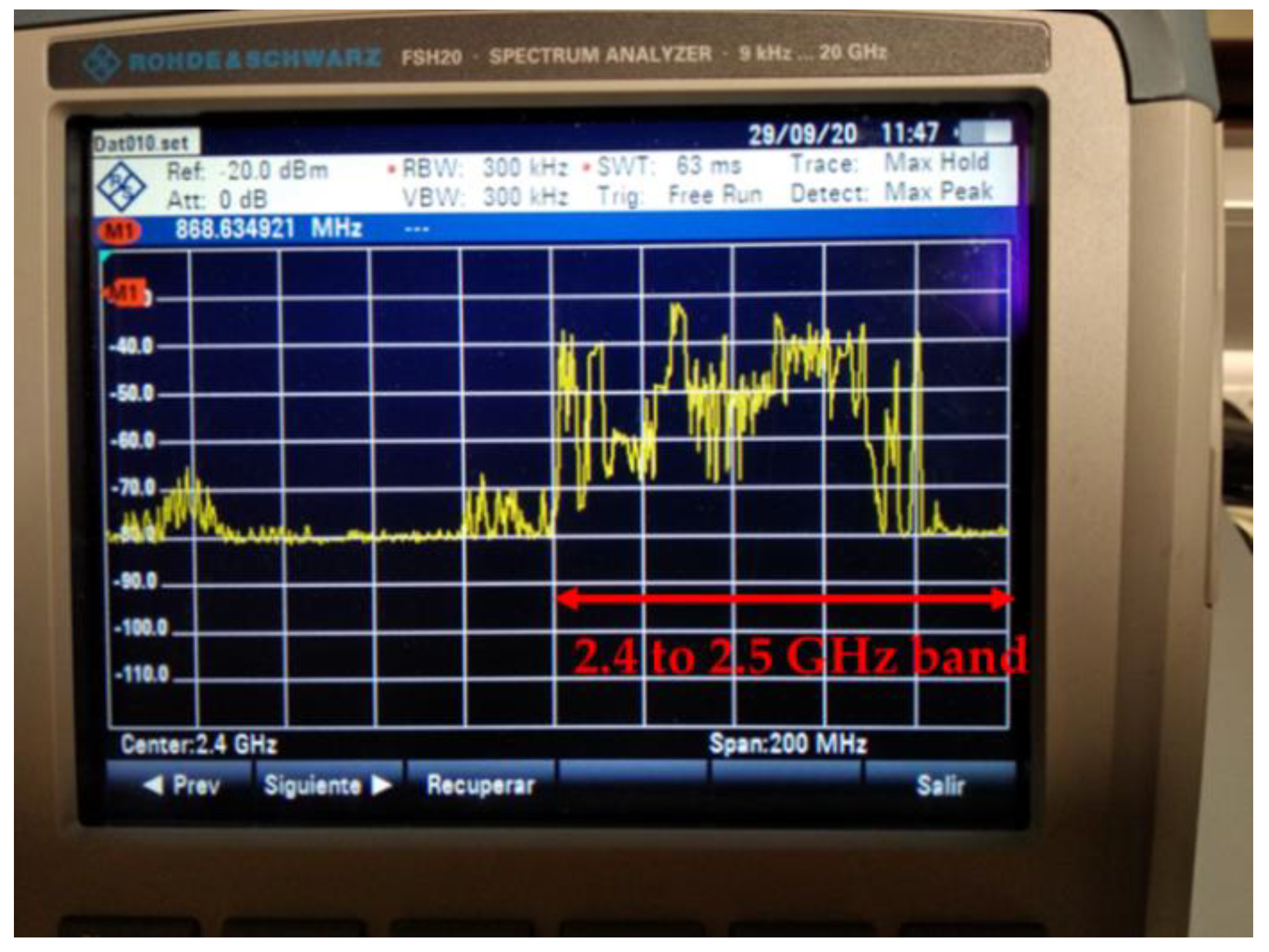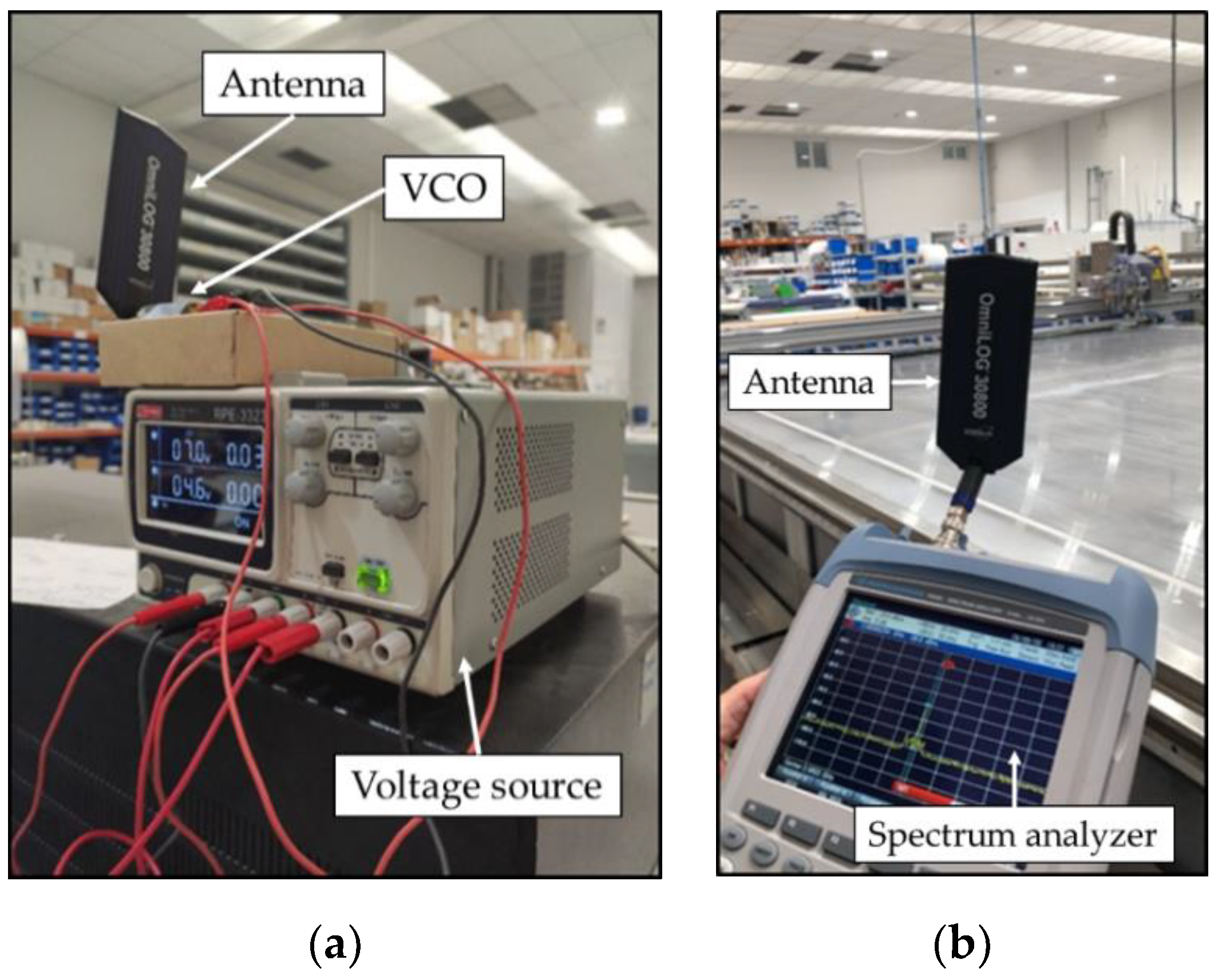Implementation of a WSN-Based IIoT Monitoring System within the Workshop of a Solar Protection Curtains Company †
Abstract
:1. Introduction
2. Workshop Description
Wireless Sensor Network Deployment
3. Results
3.1. Radio Channel Assessment wihitn the Workshop
3.2. System Performance
4. Discussion
Author Contributions
Funding
Acknowledgments
Conflicts of Interest
References
- Sisinni, E.; Saifullah, A.; Han, S.; Jennehag, U.; Gidlund, M. Industrial Internet of Things: Challenges, Opportunities, and Directions. IEEE Trans. Ind. Infor. 2018, 14, 4724–4734. [Google Scholar] [CrossRef]
- Ahmed, A.; Valtiner, D.; Thomos, C.; Dielacher, F. Wireless connectivity in Industrial sensor and control networks: Challenges and issues in a real implementation for a smart production use-case. In Proceedings of the 2020 25th IEEE International Conference on Emerging Technologies and Factory Automation (ETFA), Vienna, Austria, 8–11 September 2020; Volume 1, pp. 302–309. [Google Scholar]
- Islam, K.; Shen, W.; Wang, X. Wireless Sensor Network Reliability and Security in Factory Automation: A Survey. IEEE Trans. Syst. Man Cybern. Part C Appl. Rev. 2012, 42, 1243–1256. [Google Scholar] [CrossRef]
- Lu, X.; Kim, I.H.; Xhafa, A.; Zhou, J. WSN for Machine Area Network applications. In Proceedings of the 2016 46th European Solid-State Device Research Conference (ESSDERC), Lausanne, Switzerland, 12–15 September 2016; pp. 23–28. [Google Scholar]
- Ding, X.; Tian, Y.; Yu, Y. A Real-Time Big Data Gathering Algorithm Based on Indoor Wireless Sensor Networks for Risk Analysis of Industrial Operations. IEEE Trans. Ind. Infor. 2015, 12, 1232–1242. [Google Scholar] [CrossRef]
- Rani, S.; Ahmed, S.H.; Talwar, R.; Malhotra, J. Can Sensors Collect Big Data? An Energy-Efficient Big Data Gathering Algorithm for a WSN. IEEE Trans. Ind. Infor. 2017, 13, 1961–1968. [Google Scholar] [CrossRef]






| Node | Activity Period | Rest Period |
|---|---|---|
| Cutting table | 10,000 | 9999 |
| Laser | 10,000 | 10,000 |
| Soldering | 10,000 | 10,000 |
| Automatic slats | 10,000 | 9999 |
Publisher’s Note: MDPI stays neutral with regard to jurisdictional claims in published maps and institutional affiliations. |
© 2020 by the authors. Licensee MDPI, Basel, Switzerland. This article is an open access article distributed under the terms and conditions of the Creative Commons Attribution (CC BY) license (https://creativecommons.org/licenses/by/4.0/).
Share and Cite
Biurrun, A.; Picallo, I.; Klaina, H.; Lopez-Iturri, P.; Alejos, A.V.; Azpilicueta, L.; Socorro, A.B.; Falcone, F. Implementation of a WSN-Based IIoT Monitoring System within the Workshop of a Solar Protection Curtains Company. Eng. Proc. 2020, 2, 60. https://doi.org/10.3390/ecsa-7-08202
Biurrun A, Picallo I, Klaina H, Lopez-Iturri P, Alejos AV, Azpilicueta L, Socorro AB, Falcone F. Implementation of a WSN-Based IIoT Monitoring System within the Workshop of a Solar Protection Curtains Company. Engineering Proceedings. 2020; 2(1):60. https://doi.org/10.3390/ecsa-7-08202
Chicago/Turabian StyleBiurrun, Aitor, Imanol Picallo, Hicham Klaina, Peio Lopez-Iturri, Ana V. Alejos, Leyre Azpilicueta, Abian B. Socorro, and Francisco Falcone. 2020. "Implementation of a WSN-Based IIoT Monitoring System within the Workshop of a Solar Protection Curtains Company" Engineering Proceedings 2, no. 1: 60. https://doi.org/10.3390/ecsa-7-08202
APA StyleBiurrun, A., Picallo, I., Klaina, H., Lopez-Iturri, P., Alejos, A. V., Azpilicueta, L., Socorro, A. B., & Falcone, F. (2020). Implementation of a WSN-Based IIoT Monitoring System within the Workshop of a Solar Protection Curtains Company. Engineering Proceedings, 2(1), 60. https://doi.org/10.3390/ecsa-7-08202









